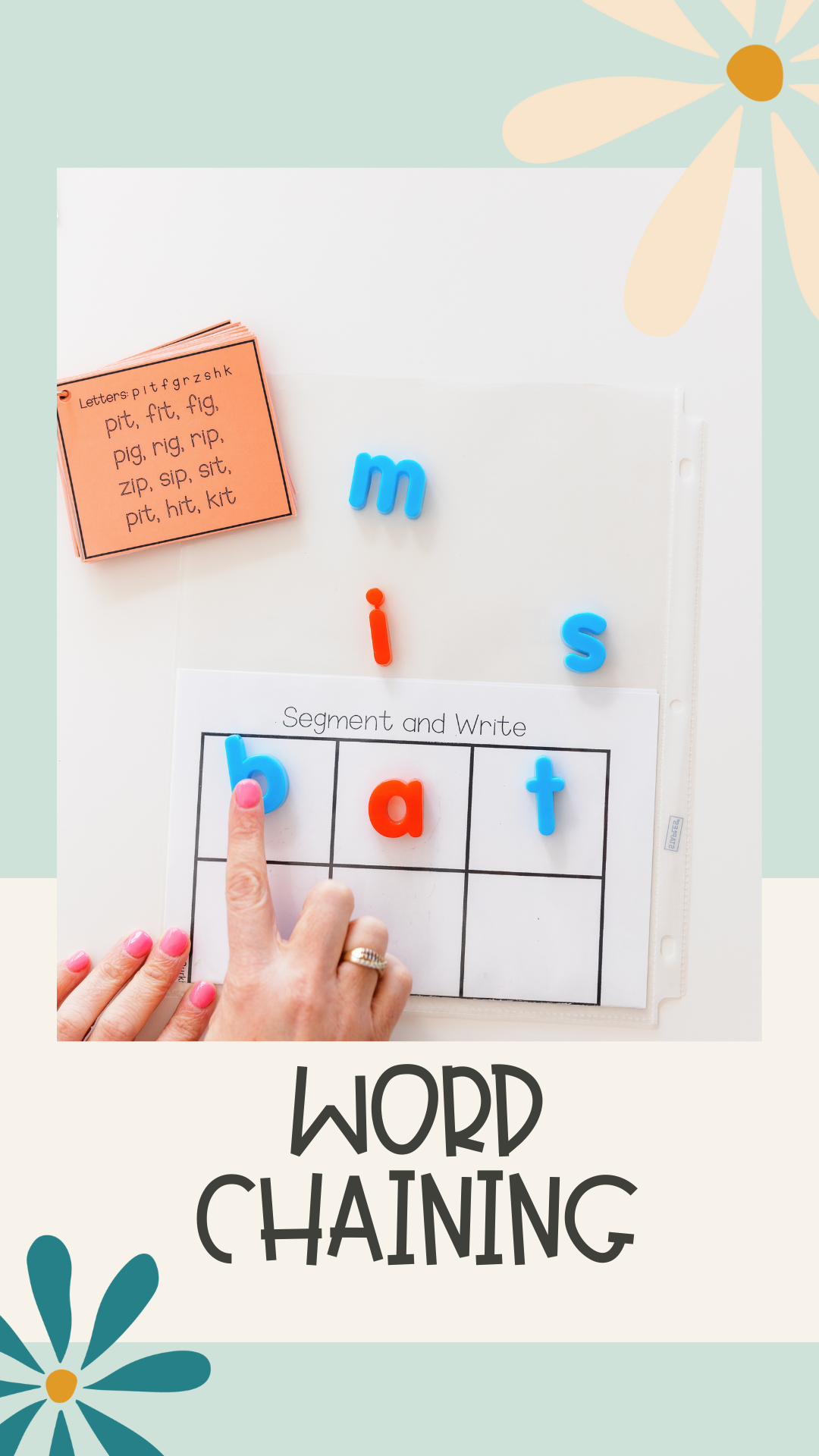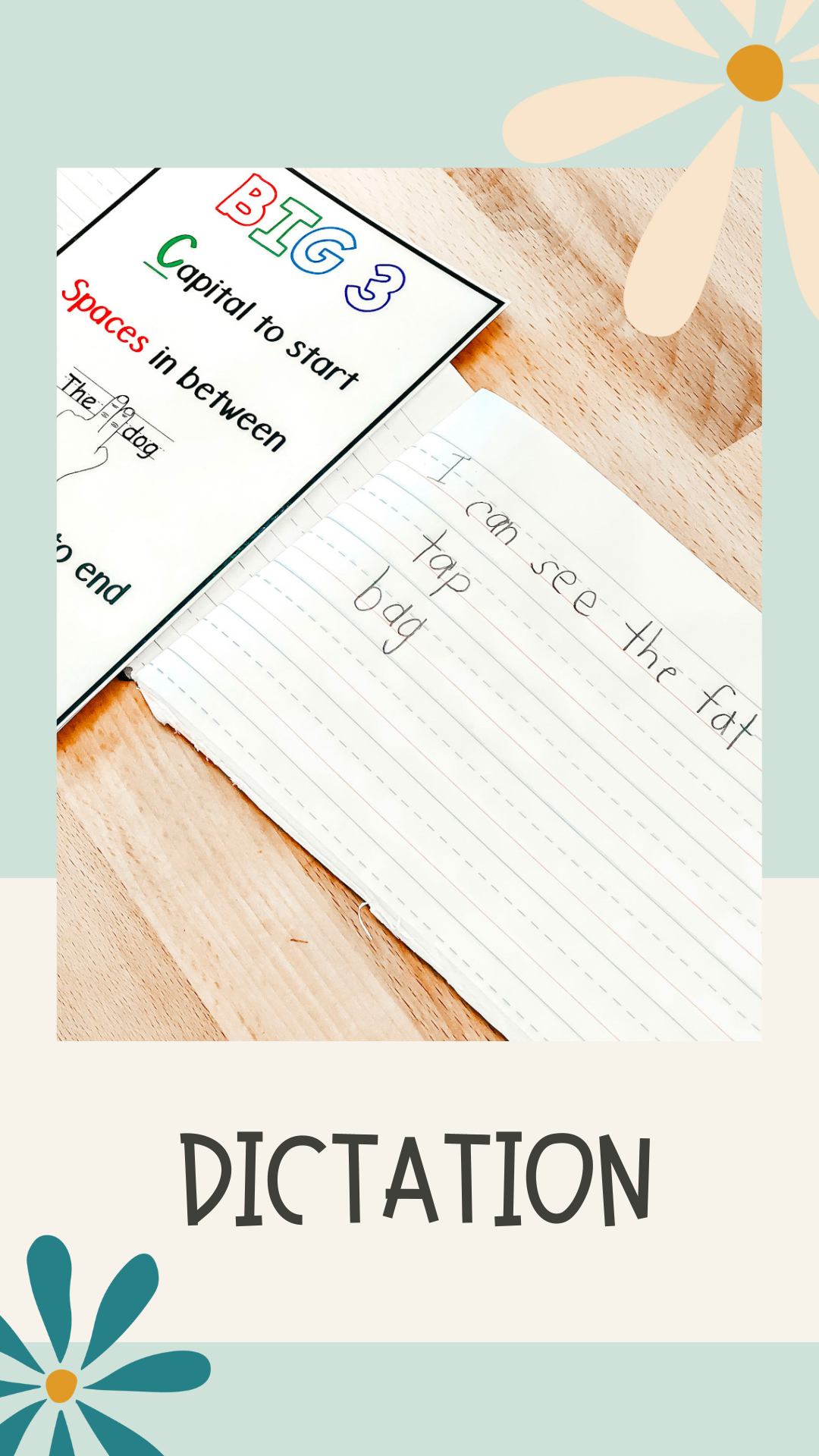Phonics Lesson Part 2
We know that small group time is so important. We have a group of students who have a need, and we want to be the ones to meet it! Have you ever wished you had a go-to phonics plan that you could whip out each time you had small group time? And one that was simple but effective?
In my previous blog post and podcast, I shared Part #1 of my phonics lesson which served as a warm-up. We chatted about phonemic awareness, the 3-part drill, vowel intensives, and the importance of review. Today, I want to chat about Part #2 of the phonics lesson: explicit teaching (focused skill) and application of skills.
Explicit Teaching: When we talk about teaching skills explicitly, we are teaching them exactly how something should be done and what something means. There are no frills and there’s no guessing - simply direct instruction. This means we are modeling, we are using the guide of I Do, We Do, You Do, and we are guiding them through this process every step of the way. We must do this directly so that they can later apply them independently.
Let’s say you’re teaching the digraph sh and you’re introducing it to your students for the first time. Your explicit teaching may sound something like this: “Today, we’re going to learn a new sound! This sound is brand new because it takes the letter s and the letter h and makes a new sound. The new sound is shhhhh.” After this, you may choose to show your students pictures of images containing the sh sound. “Listen for this new sound as I hold up the pictures. Give me a thumbs up if you hear the new sound and a thumbs down if you don’t. This is a picture of a shhhip. Do you hear the new sound?” Students give you a thumbs up or thumbs down based on what they hear as you make your way through the images. You may also choose to write the words on a whiteboard and underline the sh to emphasize the sound - both at the beginning and at the end of the word. When you’re explicitly teaching, you’re always coming back to the focused skill. In this case, you’re repeatedly pointing out that the letters s and h make the new sound sh.
After explicitly teaching the phonics skill, we must help students apply that knowledge - the “We Do” portion of the model. Some of the best activities have students connecting the sound to a symbol, like word chaining, phoneme grapheme-mapping, reading words in isolation, and Elkonin boxes. One other task you might want to do during this time is to take a look at some sight and heart words and ask yourself, What heart words would fit into this specific phonics skill? For example, if you’re studying short e, the word said is a perfect irregular word to introduce. Why? Because in the word said, /ai/ makes the short e sound. We can draw our students’ attention to the fact that even though it sounds like /e/, another letter combination makes that sound. Therefore we have to know that part by heart.
Then comes the application of Skills: When students are applying the skills they’ve learned, we are talking about how they are applying them to reading and writing. It’s essential that we give our students time to practice the skills they’ve learned in context. (This is, after all, what they will be doing in the long run!) And we must let them do this in a decodable (controlled) text that has the specific skill or skills that your students have studied.
Reading: Let’s take, for example, the digraph sh from the explicit teaching portion of this lesson. As their teacher, your goal is for them to practice reading sh in a decodable text and to ensure that the sh digraph is in there multiple times so you can give your students many chances to practice that new skill. Now, decodable texts can be tricky things sometimes because you can’t always hand your students a book or even a passage, especially in those younger grades. But never fear - we can easily scaffold this for our younger learners! Choose some activities that gradually release them into books and longer passages. For example, consider just reading the phonics skill words in context. Or rather, one of my favorite activities is sentence pyramids where you’re just reading one new word at a time. This activity also boosts their confidence because they just need to focus on one word at a time. It goes like this:
The
The cat
The cat is
The cat is on
The cat is on the
The cat is on the mat.
After some activities like this, we can then move them into decodable texts as they continue applying their knowledge to reading.
Writing: We also need to ensure that students are applying these skills to their writing. One way we can do this is to add a dictation piece to the lesson. Dictation can be a sound dictation, a word, or a sentence. It doesn’t matter which - just whatever you have time for! When we do our dictation piece, we must do it with words we’ve already taught. If you’re focusing on the digraph sh, ensure that the words you’re using in the sentences follow the scope and sequence you’ve been using.
My hope with this lesson is that it makes you feel more confident in your instruction, more efficient in your planning, and gives you more clarity during your phonics instruction. It is so important to be intentional about how we teach phonics, and by stopping here at Literacy Edventures, you can rest assured that you’re in the right place!
Helpful Phonics Resources:
Phonics Reading Roadmap: phonics instruction with the science of reading in mind. Learn how to teach systematic and explicit phonics instruction.
Kindergarten Roadmap: focus on letter sounds and phonemic awareness, and be equipped with tools you’ll use in your small group lessons that will encourage phonics and decoding
Phonics Lessons & Activities MEGA Bundle: includes a scope and sequence, blank templates, phonemic awareness warm ups, drill cards, sentence pyramids, and so, so much more.
Blog Posts:






